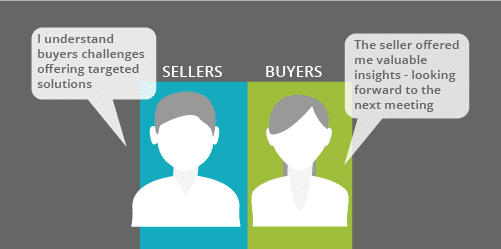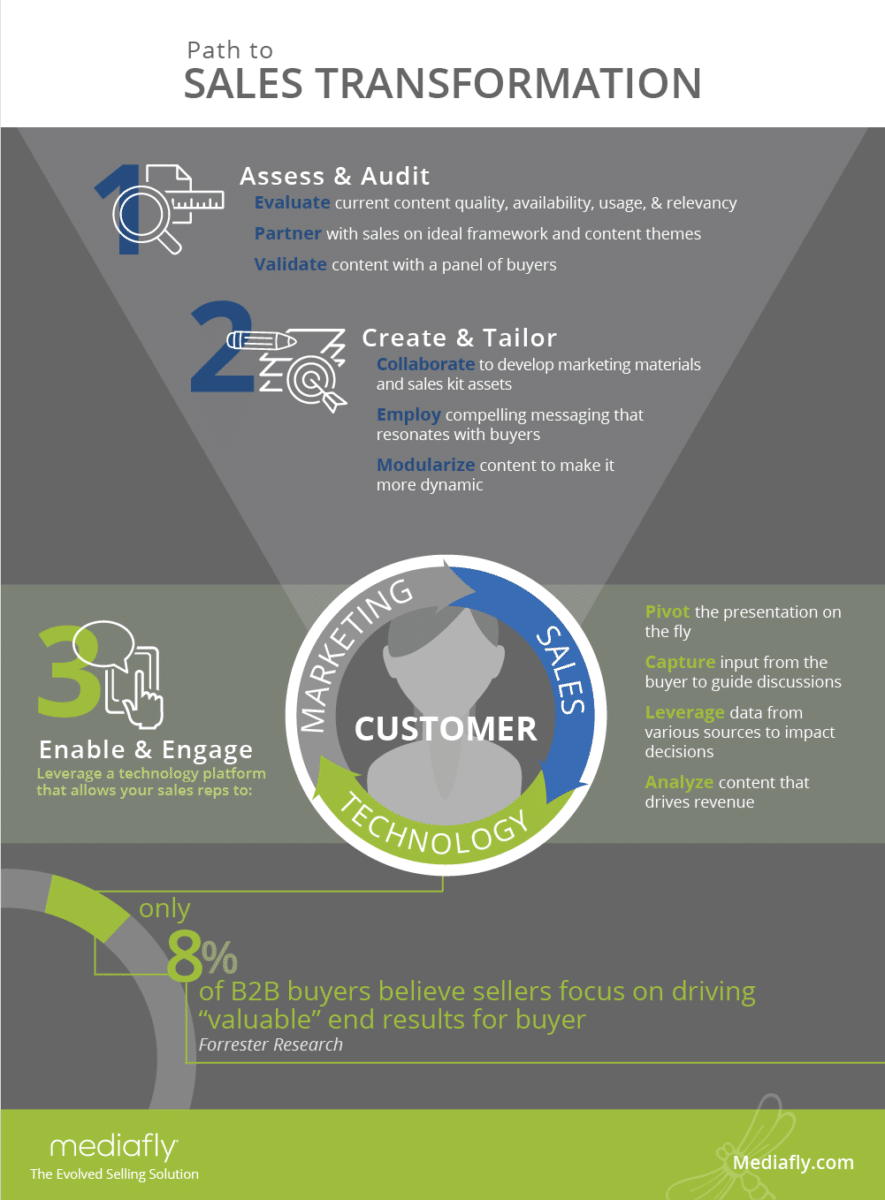Tackling the disconnect between buyers and sellers in the sales and marketing ecosystem is a challenge for companies of all sizes, and across all industries. While only 8% of buyers believe sellers are adding value, buyers will purchase from sellers who can provide clear insight and a path to value 74% of the time. If you asked sellers how many of them believed they are delivering value, the number would be much higher than 8%. This is where the disconnect starts.
In every sales interaction, there is a “moment of truth” where the seller can go one of two ways. This “moment of truth” could be a question from the prospect, a pivot to another topic, or a need for clarification. The seller can either capitalize on this moment, or they can continue with their scripted presentation. Presentations should be tailored around the buyer’s needs, not around what a salesperson has prepared or is most comfortable discussing.
Sellers that embrace the buyer’s interaction often leads to dynamic sales conversations. Though the buyer might be throwing a wrench into the presentation prepared, being able to pivot in the moment to discuss what’s most important to the buyer (thus abandoning your game plan) is what makes sellers most effective.
Our three-part framework helps companies take steps towards closing the gap and creating effective sales interactions. Before you can run, you must learn to crawl and walk. Our framework first focuses on closing the gap between marketing and sales in order to align the buying journey.
Part 1: Assess & Audit
Sales and marketing must take inventory of the company’s assets and determine the good, the bad, and the ugly. This will include the processes, tools, and content being used as well as those that are not being used. It is common for organizations to have a large amount of content that isn’t used. Sales and marketing will unite on what materials were effective, what do we need more of and what’s missing along with eliminating unused or ineffective content.
Part 2: Create & Tailor
Now that we know what holes need to be filled, it is time to get after the work that needs to be done. The teams will synchronize to build out new assets, marketing materials and sales processes with the buying journey and “moment of truth” in mind. Key questions to keep in mind when building creating tailored materials include: Is it unique? Are you creating differentiation for your offering? Is it valuable for your audience? Is this something you can prove? Is it memorable? Keep it simple, but keep it direct.
Part 3: Enable & Engage
The final step is where executing the compelling content comes to fruition. Enabling sellers to navigate sales meetings with confidence and poise is backed by technology to drive efficiency. To incorporate steps one and two, tools are needed to align marketing and sales efforts. The technology chosen should include the four pillars to enable stronger sales presentations.

It’s important to cycle through the framework on an ongoing basis to ensure an open feedback loop between marketing and sales. With feedback from what content resonates with prospects, marketing can use data to transform sales materials to align with buyers’ needs. Sellers will shift from one-way conversations to allowing the buyer’s input to dictate their journey. This is where the journey begins to close the gap and increase value seen in sales interactions from 8%.
Resources:
You can find the full recording from our webinar here: Closing the Disconnect Between Buyers and Sellers
See this in action through the PepsiCo Case Study
About Mediafly
Mediafly was founded on the principle that people dislike being sold to because it rarely addresses their needs. By using our technology, the world’s top companies are able to shape sales presentations in real-time, rather than boring their customers with generic pitch decks. Sales teams using Mediafly are more effective in each meeting because they engage their customers with insights that are directly relevant to them. We call this Evolved Selling™.


Comments are closed.